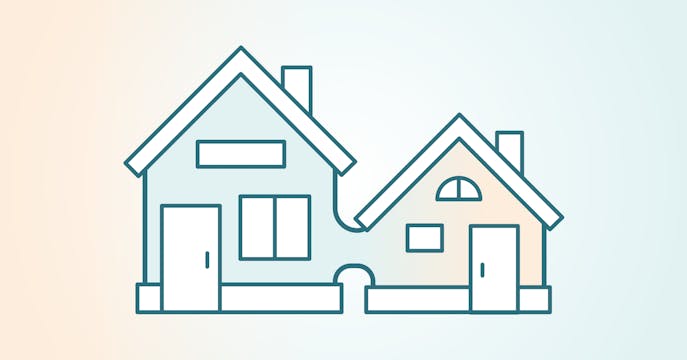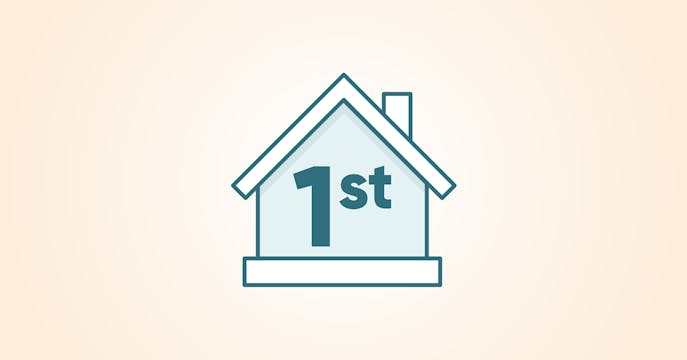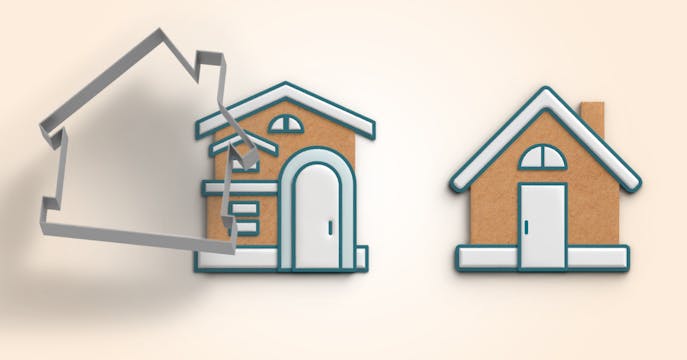Have more questions about prefab home financing? Here are some common ones.
How does a mobile home park affect your mortgage options?
Because a mobile home park sits on leased land that you rent instead of own, mortgage options through a traditional lender may be limited or unavailable.
Alternative and private lenders may offer a financing solution (referred to as a chattel loan or mortgage), though it may come with higher rates, restricted mortgage terms, and a shorter repayment period.
Why does leased land affect your mortgage eligibility?
A bank or mortgage lender can't use leased land as collateral to secure your mortgage loan, unless a specific arrangement has been made with a land developer. There is no home title registered; instead, your home is registered as personal property, similar to an auto loan.
The home itself, without the land security, may not hold enough resale value over a typical traditional mortgage amortization to placate a lender's risk appetite. If default occurs, your home would likely be confiscated, and you would need to find other sources to compensate the lender for any shortfall — a lending situation that implies higher risk and potential loss for the lender.
Leased land can also be fraught with other uncertainties, for example, if the land is suddenly put up for sale and the buyer decides to evict the existing homes.
A chattel loan for a leased setup comes with stricter criteria and higher borrowing costs to help address the increased lending risks.
Is your prefab home not yet installed on the property?
If the home is not yet installed and you need financing for the construction phase, you may require a different kind of mortgage, called a construction (draw) or completion mortgage — usually obtained directly through a big bank, not through a mortgage broker.
However, once the house is within 120 days of being finished, you can then ask an expert True North broker to shop your options, including applying with our in-house lender, THINK Financial, for a better rate and mortgage you can live with (subject to eligibility and conditions).
Read more about construction and completion mortgages here: New Build Mortgages
Are prefab homes more affordable?
Not necessarily. Many prefab home companies, especially modular builders, aren't yet producing factory homes to scale.
Meeting current demand, the focus is on delivering a quality product, as the wait continues for zoning regulations to be eased in more city centres across Canada.
Canadian prefab companies (such as Eagle Homes, Nelson Homes, and Modern Modular) may offer choices ranging from modest to luxury builds, similar to traditional on-site home builders — keeping in mind that you still need to pay for the land. So the cost can hinge on what you buy, and where you install, your home.
Some mobile and manufactured homes may cost about 10–40% less, square footage to square footage, compared with typical on-site builds — thanks to efficiencies in factory production and reduced on-site labour.
Bulk-produced homes, more affordable pricing.
The more these factory home builders can scale capacity, the more affordable these home types might be compared to on-site builds. And that solution partly lies in how easily areas, towns, and cities allow prefab homes to be installed in their communities.
Increased inner-city use is likely to have the most impact on affordability. Centres such as Edmonton and Calgary have cleared some prefab red tape. However, the Vancouver and Toronto areas, Canada's most price-stretched markets, have yet to ease zoning roadblocks — fuelled by NIMBY-ism (not-in-my-back-yard) and dependence on development-related revenue — to encourage more affordable homes as an option.
Calculate your home affordability here.
Can these types of homes help address Canada's housing crunch?
They could, though the pre-built housing industry faces obstacles in making this claim, as it requires increased streams of financial backing, relaxing civic resistance to increased home density in established residential neighbourhoods, and zoning changes to allow the density in the first place.
Canada's housing is down by over 5 million homes needed by 2030 (on top of annual construction). Our nation faces many challenges in its home-building pace, including labour shortages and rising home-building costs.
Prefab can make the build process faster and more efficient — putting more roofs over Canadian heads, sooner. And prefab home manufacturers and builders would love nothing more than to help out.
There's no place like (a prefab) home — we can help.
'Home' can come in many forms — like one that rolls fresh off the highway into your dream neighbourhood or comes in smaller pieces that fit together like a (much more substantial) Barbie set.
You don't have to stick to traditional home options to reach your homeownership goals. At True North, our highly trained, salaried brokers have the flexibility to help you find the prefab mortgage solution that best fits you, with rates and options that can help you save thousands.
We're here for you across Canada. Apply with us online, by phone, or walk into one of our brick-and-mortar stores for friendly, in-person savings.
Disclaimer: Any companies or organizations mentioned or linked to in this article are provided for informational purposes only. Their inclusion does not constitute an endorsement, and True North Mortgage is not responsible for the content, products, or services they provide.






